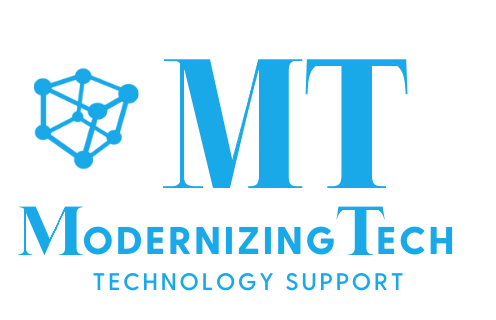In the competitive world of online content, making sure your website stands out is more important than ever. On-page SEO is a critical part of this process, focusing on the elements you can directly control to improve your site’s visibility and usability. Think of it as setting up your website’s foundation to ensure it’s both search engine-friendly and user-centric.
- Identify Target Keywords
- Optimize Title
- Write Headlines in H1 Tag
- Write Meta Description
- Check URL Slugs
- Add Keywords to Content
- Use Proper Subheading Tags
- Use Internal Linking
- Add Visual Content
- Apply Schema
- Verify Website Is Indexed
- Test Performance
- Verify Mobile Responsiveness
- Review Content
Identify Target Keywords
Before you start optimizing your content, it’s essential to identify the right keywords. These are the terms and phrases your target audience is searching for. Use tools like Google Keyword Planner, SEMrush, or Ahrefs to discover keywords with good search volume and relevance to your content. Aim for a mix of short-tail and long-tail keywords that reflect the intent of your audience.
Optimize Title Tag
The title tag is one of the most important on-page SEO elements. It appears in search engine results and browser tabs, so it should be compelling and include your primary keyword. Keep it under 60 characters to prevent truncation and make sure it accurately describes the content of your page. For example, instead of “Welcome to Our Website,” try “Best Organic Skincare Products | Natural Beauty Solutions.”
Write Headline Using H1 Tag
The H1 tag is reserved for your main headline and should clearly convey the topic of your page. It should be both descriptive and include your primary keyword. Using an H1 tag helps search engines understand the main focus of your content. For instance, if your page is about DIY home improvement tips, your H1 might be “Top 10 DIY Home Improvement Tips for Beginners.”
Write Meta Description That Fits
The meta description provides a brief summary of your page’s content and appears below the title in search engine results. It should be engaging and include relevant keywords, but also provide a clear reason for users to click through. Keep it near 150 characters.
Check the URL Slug for SEO-Friendliness
The URL slug is the part of the URL that comes after the domain name. For SEO purposes, it should be short, descriptive, and include your primary keyword. Avoid using special characters and aim for hyphens to separate words. For example, use www.example.com/diy-home-improvement-tips instead of www.example.com/post123.
Add Keywords to Your Body Content
Incorporate your target keywords naturally within the body of your content. This includes the introduction, body paragraphs, and conclusion. Make sure to use variations and synonyms to avoid keyword stuffing and maintain readability. For example, if your keyword is “organic skincare,” you might use related phrases like “natural skincare products” and “chemical-free beauty solutions.”
Mark Headings and Subheadings with Header Tags
Using header tags (H2, H3, etc.) helps structure your content and makes it easier for users and search engines to navigate. Use H2 tags for main sections and H3 tags for subsections. This not only improves readability but also allows you to incorporate additional keywords naturally. For example, in an article about home improvement, H2 tags could be “Planning Your Project” and H3 tags could be “Choosing the Right Materials.”
Use Internal Linking for Better Navigation
Internal links help users navigate your site and discover related content. They also distribute page authority and relevance across your site. When linking internally, use descriptive anchor text that tells users what they’ll find on the linked page. For example, if you have a blog post about “DIY Painting Tips,” link to it from a related page about “Home Renovation Projects.”
Add Engaging Visual Content
Visual content like images, videos, and infographics can enhance user experience and make your page more engaging. Ensure that all visual content is relevant to your topic and includes descriptive, keyword-rich alt text. This helps search engines understand the content of your visuals and can also improve accessibility for users with visual impairments.
Apply Schema Markup
Schema markup is a type of structured data that helps search engines understand the context of your content. Implementing schema can enhance your search results with rich snippets, such as star ratings or product prices. Use tools like Google’s Structured Data Markup Helper to add schema markup to your pages, making it easier for search engines to provide more informative results to users.
Make Sure Your Page is Indexed
To ensure your page appears in search engine results, check that it’s indexed. Use Google Search Console to see if your page is indexed and submit a sitemap if necessary. You can also use the “site:yourwebsite.com” operator in Google Search to check if your page is listed.
Test Performance and Increase Page Speed
Page speed is crucial for both user experience and SEO. A slow-loading page can lead to higher bounce rates and lower rankings. Optimize images, leverage browser caching, and minimize CSS/JavaScript files to improve load times.
Verify Mobile-Friendliness
Being mobile-friendly is also importsnt SEO and the user’s experience.
Tools like Google PageSpeed Insights can provide specific recommendations for speeding up your site and also test mobile responsiveness.
Review Your Content
High-quality content is key to engaging users and ranking well in search engines. Ensure your content is informative, well-organized, and provides value to your readers. Check for grammar and spelling errors, and make sure your content is original and relevant to the topic. Aim for content to be well-written, clear, actionable information to keep visitors on your page longer and encourage them to return. For some specific writing tips, check out Grammarly’s (a popular writing assistance service) blog on Writing tips here.
Also check out tips for Off Page SEO to further optimize your website for search engines and the internet.
